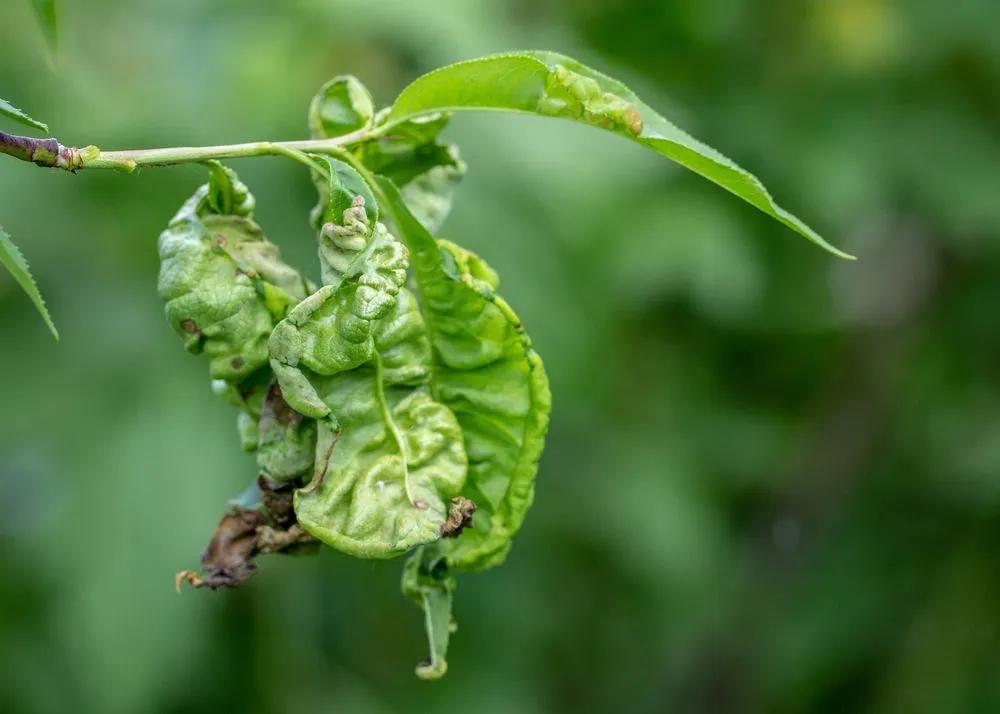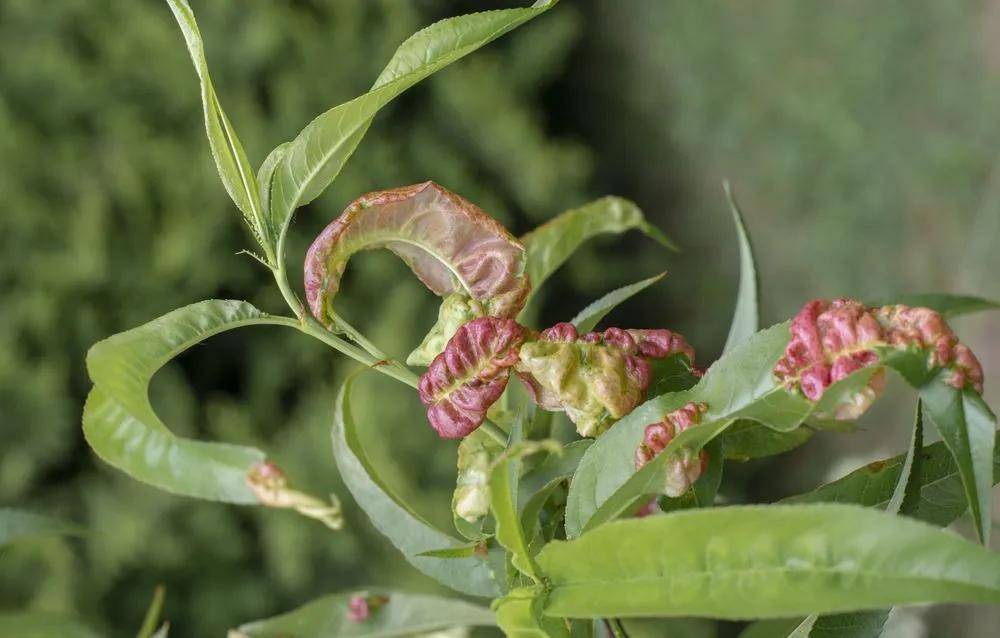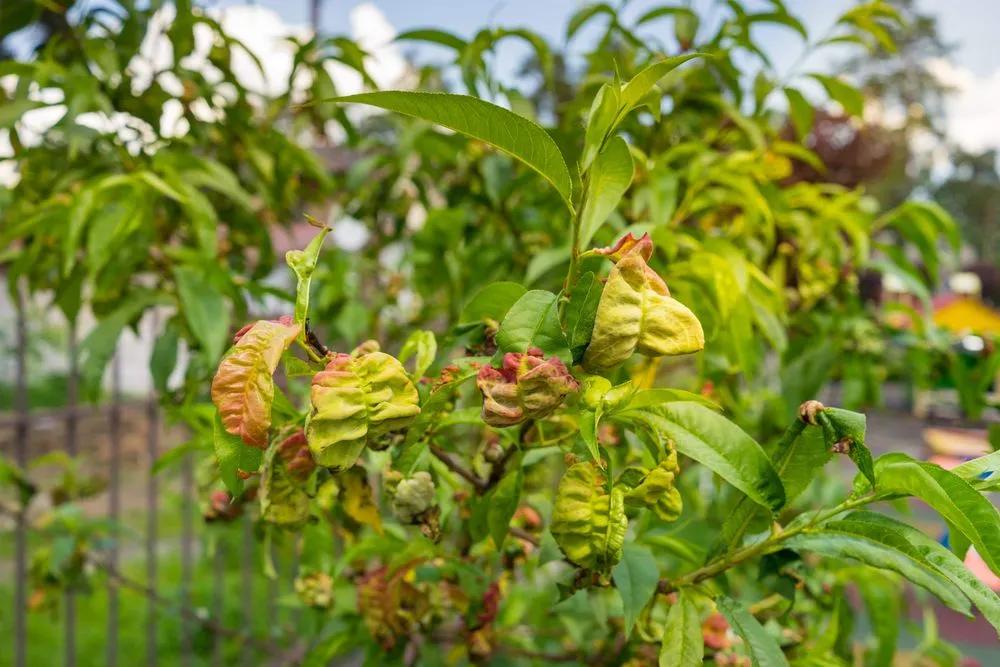The fungus Taphrina Deformans causes this plant’s disease. As you can guess from the disease’s name, it affects Peach trees and other fruit trees like nectarines, apricots, and almonds. Sometimes it’s shortly known as ‘Curl’ and it doesn’t have mercy for the plant because it causes severe warp of the leaves in spring, destroying them prematurely. Its working time in spring is not coincidental because fungal spores are fond of warmth. The wet weather during this period even worsens the plant’s condition since fungal spores can create new infections.
Peach Leaf Curl



Signs of damage
- White fungal spores on the diseased leaves. It’s easy to notice the problem because of its look.
- Rapid falling of the affected leaves. This is harmful in spring because defoliation exposes brunches and can lead to sunburn.
- Leaves’ look changes. They become thicker and jammed, and their color turns red. Shots also become thicker, and the disease can kill them if they are heavily affected.
How to prevent
This fungal disease is not strong enough to kill the tree by itself. But it is very skilled in weakening the plant. Affected trees become inclined to various kinds of stress. You must water the plant once a week and fertilize it with nitrogen until August. And the easiest way to avoid such a problem is to plant varieties resistant to this disease. Currently available resistant varieties include Frost, Indian Free, and Muir.
Heal
Unfortunately, it’s impossible to control the fungus once it has appeared. But effective fungicide can be a game-changer because it can solve many problems. In this case, a copper-based fungicide is the best. Sulfur also helps with the Peach Leaf Curl issue.
Go Premium to continue reading
Also you’ll get unlimited access to disease identification and all the other beneficial features
More problems
